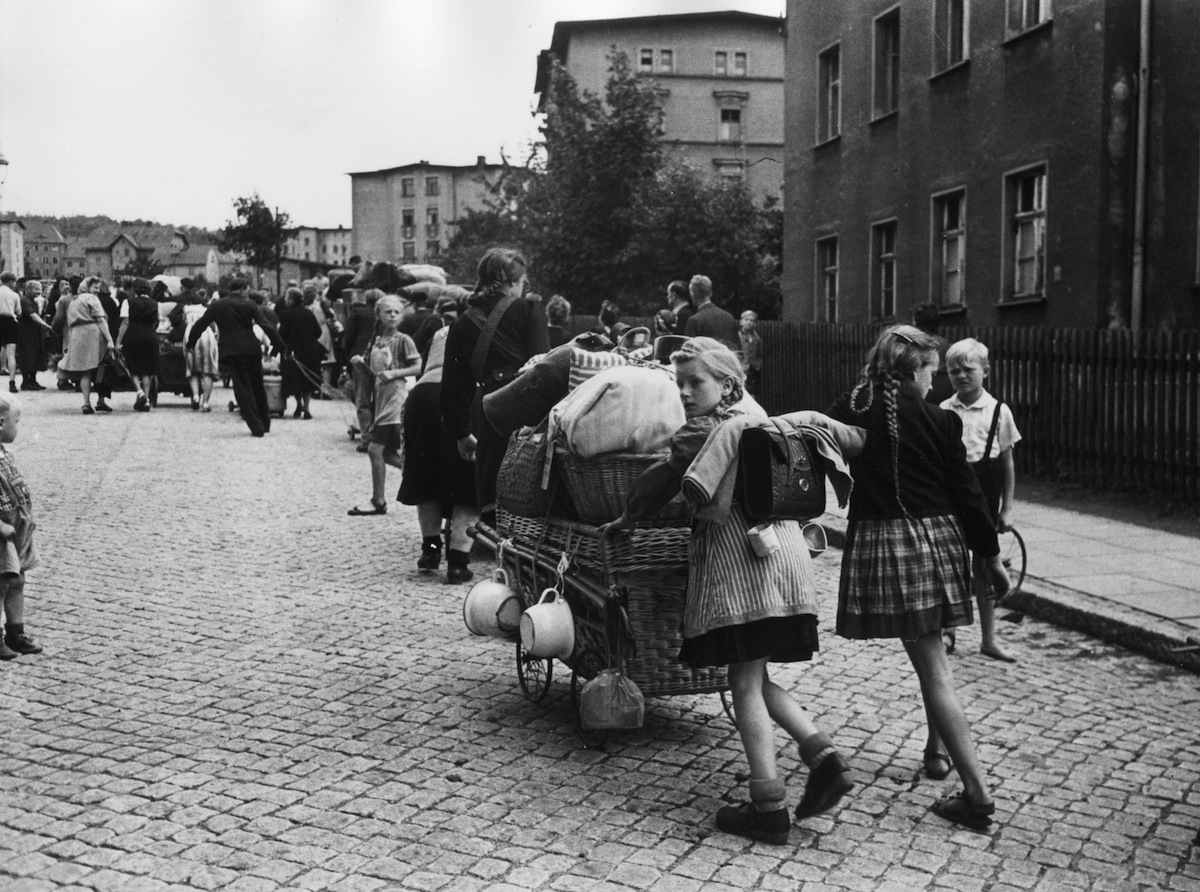
There’s no neat term to sum up the crowds rushing borders, the temporary villages springing up at rail stations, the heart-rending sight of a drowned child—but, at the moment, “migrant crisis” seems to be what the world has decided to call the situation facing Europe right now.
That language has become more important recently as the waves of people currently seeking refuge from strife and poverty in areas like Syria draw new attention to the terminology used to describe them. In particular, the question of whether the drowned boy whose photo galvanized observers this week should have qualified for asylum in Canada has underlined the difference between a “refugee” and a “migrant.” According to the United Nations, the distinction is this: a refugee is running away from something and a migrant is voluntarily seeking something.
That definition goes back to an earlier international refugee crisis: the one that followed World War II. The 1951 Refugee Convention, which set forth international protocol on how to deal with refugees and has since guided the U.N.’s work with people seeking asylum, was a product of post-war chaos —and, at that point, the U.N. definition of “refugee” meant something extremely specific.
In fact, the term referred only to people who had already been classified as refugees by the International Refugee Organization (a U.N. group that was disbanded shortly after 1951) or who were already outside their homelands “as a result of events occurring before 1 January 1951.”
Like today, many of those so-called “displaced persons” were bound for Germany. As TIME reported in 1952:
During and after World War II, the D.P.s came into Germany like the waves of the sea, millions of them, wave upon wave. All the waves looked alike: bewildered people in ragged clothes, clutching children and bundles. But the waves were different:
-Some had been brought to Germany as Hitler’s slave workers; others came voluntarily to take good jobs. Some sluiced into Germany in terror before the advancing Soviet armies. Some fled from [Yugoslavian dictator] Tito. This broad wave totaled 5,000,000.
-Then there was the wave of ethnic Germans, the Volksdeutsche, whom the Big Three at Potsdam agreed to return to Germany from Poland, Czechoslovakia and Hungary. These toted up to 8,000,000.
-There was another wave of 1,000,000 Germans, fleeing from East Prussia.
-In 1946 a pogrom in Poland sent 100,000 Jews fleeing into Germany.
-In 1948, when Stalin took over Czechoslovakia, a new wave began to roll: those who fled the Iron Curtain.
Many of these waves have been absorbed. The Zionists took care of most of the Jews, and the Germans, whose economy is now going at a higher rate than in Hitler’s heyday, have absorbed the 8,000,000 Volksdeutsche and the 1,000,000 East Prussians, as well as a few of the early D.P.s and most of the recent Iron Curtain refugees.
Of the 5,000,000 D.P.s at the end of the war, the [International Refugee Organization], which was created by the United Nations in 1946, has helped send 3,500,000 back to their homes, has resettled more than 1,000,000 in 70 countries (the U.S. has taken 300,000). At one time the I.R.O.’s chartered ships made up the largest fleet of passenger steamers in the world.
And yet, even so soon after World War II and the establishment of the United Nations, it was quickly clear that the world wasn’t done creating refugees. Setting up a system that could only help people who needed asylum due to a past war was clearly not a long-term solution.
So, in 1967, the U.N. added a new protocol acknowledging “that new refugee situations have arisen since the Convention was adopted” in 1951. The new definition of refugee would apply to anyone who “owing to well-founded fear of being persecuted for reasons of race, religion, nationality, membership of a particular social group or political opinion, is outside the country of his nationality and is unable or, owing to such fear, is unwilling to avail himself of the protection of that country; or who, not having a nationality and being outside the country of his former habitual residence is unable or, owing to such fear, is unwilling to return to it.”
Whether that definition should apply to the people coming to Europe today is a matter the world must now face. But, as anthropologist Ruben Andersson suggested to the Associated Press, the most important terminology of all may be one with a much simpler definition: “people.”
Read the full story from 1952, here in the TIME Vault: The Unwanted
More Must-Reads from TIME
- Breaking Down the 2024 Election Calendar
- How Nayib Bukele’s ‘Iron Fist’ Has Transformed El Salvador
- What if Ultra-Processed Foods Aren’t as Bad as You Think?
- How Ukraine Beat Russia in the Battle of the Black Sea
- Long COVID Looks Different in Kids
- How Project 2025 Would Jeopardize Americans’ Health
- What a $129 Frying Pan Says About America’s Eating Habits
- The 32 Most Anticipated Books of Fall 2024
Write to Lily Rothman at lily.rothman@time.com